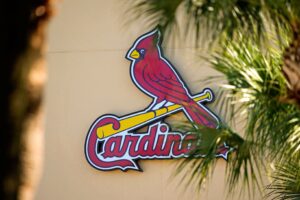The Pittsburgh Pirates, in the wild card race despite an impotent offense, should add the stolen base to their attack. So far, good starting pitching and a weaker National League have kept the Bucs in the race. However, there will be moves by all contending teams at the trade deadline. The Pirates can’t continue to rely on the status quo. General manager Ben Cherington has stated that the Pirates will look to improve internally while pursuing outside help from trades. In the meantime, the stolen base could be a useful weapon for them. In the current part of their schedule, the Pirates are seeing the benefits of the stolen base firsthand, with games against the Tampa Bay Rays and Cincinnati Reds, two of the “runningest” teams in all of baseball.
Pirates Underusing the Stolen Base
The Pirates rank near the bottom of the National League in virtually every important offensive category. They’re 14th in batting average, on-base percentage, and slugging percentage. They’re 13th in runs scored, home runs, and doubles. Also, they’re 12th in stolen bases. Of course, part of the reason for the low ranking in steals correlates with the low ranking in reaching base. As goes the old baseball axiom, one can’t steal first base (unless one is Lloyd McClendon).
Even so, the running game is not part of their repertoire. Whether that’s the philosophy of manager Derek Shelton or a front office dictation is unknown. After all, in today’s baseball, the manager’s main job is to execute the front office’s vision. So, let’s not rush to blame Shelton.
What the Geeks Say
One of the reasons Shelton was hired as Pirates manager was his embrace of analytics. In recent years, the Sabermetrics crowd has discounted the value of the stolen base. They say if you have a Rickey Henderson or Vince Coleman, turn him loose, otherwise base stealing contributes little. The theory is that outs are precious and over the long haul, a runner caught stealing costs his team more runs than it gains when the runner successfully steals a base. For a baserunner to be considered successful, his stolen-base success rate should be around 70 percent, so say the number-crunchers.
Per FanGraphs, the measure of the effectiveness of a stolen base is Weighted Stolen Base Runs, or wSB. The formula looks like it was devised by Euclid, but suffice it to say that an average wSB is zero. A wSB above zero indicates how many runs above average the runner created by stealing bases. Conversely, a wSB below zero indicates a below-average base stealer.
What the Stolen Base Has Meant (or Not Meant) to the Pirates
At the close of Monday’s action, the Pirates have stolen 41 bases and been caught eight times. The team wSB is a mere 1.1, despite an 83.7 percent success rate. In layman’s terms, the running game has added just one run all season long to the Pirates’ total. This would seem to substantiate the theory that stealing bases is just not worth it. Yet, their success rate indicates it’s something they’re good at. Indeed, while they won’t remind anybody of the 1982 St. Louis Cardinals, the fact remains that except for the catchers and Rowdy Tellez, the Pirates’ players have base-stealing speed.
Pirates coming into today. The starting pitching is all that they have. Outside of them, they are as bad as usual.
Bullpen ERA- 27th
Batting average- 26th
Runs- 25th
HRs- 24th
OBP- 26th
OPS- 28th
Slugging- 28th
Stolen bases- 22nd
Starters ERA- 7th— Chris Dokish (@ChrisDokish) June 23, 2024
However, it also stands to reason that a team’s wSB can increase simply with more attempts. In 1976, the Oakland Athletics set an American League record with 341 steals. Thirteen players stole bases, led by Bill North with 75. Eight players stole at least 20 bases. Those 341 stolen bases resulted in a wSB of 22.0. A similar wSB would be invaluable to the current Pirates, who play plenty of close games. (Another issue has been the Pirates’ failures with runners in scoring position. This has already been adequately covered on these pages.)
History Lesson
What the statistics don’t show are the effects the threat of the stolen base has on the pitcher and defense. Pirates fans will recall it was a factor in the 1979 World Series victory over the Baltimore Orioles. The idea of the stolen base was better for the Pirates than the stolen base itself. The Bucs stole no bases in that Series. There were four unsuccessful attempts, including one by Matt Alexander, who also played for those 1976 A’s. Omar Moreno, who led MLB with 77 steals, never made an attempt.
Nevertheless, the threat caused Orioles catcher Rick Dempsey to call for easy-to-handle high fastballs to put him in a better position to make a throw to second base. Unfortunately for him, they were easy for hitters to handle, too. As a result, the hitters who followed Moreno in the order, Tim Foli and Dave Parker, hit .333 and .345, respectively, in the Series. Dempsey told Russ Franke of The Pittsburgh Press, “I was expecting more out of Omar, but the kid wouldn’t run. Maybe they thought this was the better thing to do. Omar didn’t prove to me he is a good baserunner, but it helped Foli a lot. He got more fastballs to hit.”
The following winter, Dempsey ran into Pirates manager Chuck Tanner at a banquet. According to the Pittsburgh Post-Gazette, Dempsey told Tanner, “Our pitchers threw a lot of high fastballs to Foli. Now that I look back, you wanted those type pitches. Foli murdered us with his bat and Moreno was going from first to third.”
The Last Word
The Pirates keep trying things to improve their offense. They’ve tried sending Henry Davis and then Jack Suwinski to the minors, only to need them back in Pittsburgh. They’ve tried calling up speedster Ji Hwan Bae, only to see him land on the injured list. Shelton has tried different lineups. The Pirates have nothing to lose by adding the stolen base to their bag of tricks.
Photo Credit: © Darren Yamashita-USA TODAY Sports






